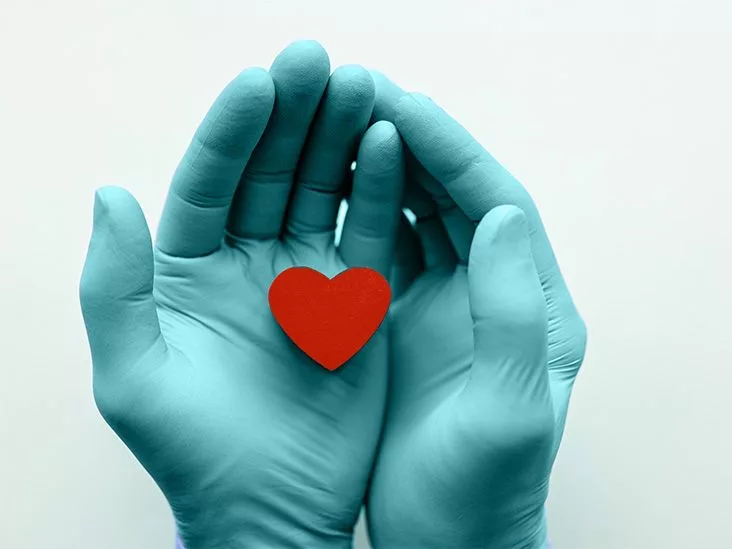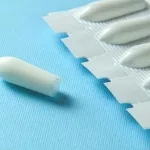Hey there! If you’ve ever wondered what a cardiologist actually does to keep his own ticker in top shape, you’re in the right place. I’m Dr. Haider, a board‑certified cardiologist, and I’m about to spill the beans on the habits that keep my heart humming along. No fluff, no jargon—just honest, friendly advice you can try right now. Ready? Let’s dive in.
Why It Matters
Seeing a doctor for heart‑health advice is great, but knowing that the same doctor lives by those recommendations adds a layer of trust. When a cardiologist practices what he preaches, the tips become more than theory—they’re proven, lived‑in‑practice habits. And guess what? They work for most of us, too, with a few personal tweaks.
Core Pillars
Think of heart health like building a house. You need a solid foundation (exercise), sturdy walls (nutrition), a reliable roof (sleep), a comfortable interior (stress management), and regular inspections (monitoring). Below, each pillar is broken down into bite‑size questions you probably have, followed by clear, actionable answers.
How Much Exercise Does a Cardiologist Recommend?
According to the American Heart Association, 150 minutes of moderate‑intensity activity per week is the baseline. I aim for a little more—about 30 minutes most days, plus a few strength sessions. My daily step goal? Roughly 8,000 steps, which I track with my smartwatch. A recent Kaiser Permanent article shows that simple tracking helps keep the habit alive.
Quick‑Start Exercise Routine
- Warm‑up: 5 minutes brisk walk.
- Interval circuit (1 min work, 20 sec rest): body‑weight squats, push‑ups, planks, bicep curls with light weights.
- Cool‑down: 5 minutes gentle stretching.
What Foods Should Be on My Plate?
Eat the rainbow, and then some. A heart‑healthy plate is half vegetables and fruit, a quarter lean protein (think fish, beans, or poultry), and a quarter whole grains. Fiber is the secret weapon—aim for at least 25 grams a day. Oats, beans, berries, and leafy greens are all fiber powerhouses. I’ve found that starting the day with a half‑cup of oats keeps me full and steady, thanks to soluble fiber that helps lower LDL cholesterol.
Food Swaps I Use
| What I Usually Eat | Heart‑Smart Swap |
|---|---|
| White bread | Whole‑grain or sprouted‑grain bread |
| Cheese (full‑fat) | Reduced‑fat cheese, nutritional yeast, or avocado |
| Red meat | Poultry, salmon, or plant‑based protein like lentils |
| Sugary soda | Sparkling water with a splash of citrus |
Why Is Sleep a Non‑Negotiable Habit?
Sleep isn’t just “rest”; it’s active repair time for your cardiovascular system. During deep sleep, blood pressure drops, inflammation eases, and hormone levels balance. Aim for 7‑9 hours—set a regular bedtime, dim the lights, and ban screens at least an hour before you snooze.
How Can I Manage Stress Without Turning Into a Yogi?
Stress spikes cortisol, which can raise blood pressure and strain your heart. You don’t need a meditation retreat; a few simple habits can make a big difference:
- Take a 3‑minute “box breathing” break: inhale 4 sec, hold 4 sec, exhale 4 sec, hold 4 sec.
- Walk outside—nature’s green light for heart health.
- Jot down three things you’re grateful for before bed.
What Should I Monitor Regularly?
Think of monitoring as your heart’s routine check‑up with you as the doctor. Key numbers to track:
- Blood pressure: check once a week at home or during a pharmacy visit.
- Cholesterol: every 6‑12 months, or as your doctor advises.
- Weight and waist circumference: monthly.
- Resting heart rate: daily on your smartwatch.
According to a Heart Association study, keeping these metrics in check can slash your risk of heart disease by up to 40 %.
Exercise Tips
How to Build a Daily Movement Habit Without a Gym
Gym memberships are great, but life gets busy. Here’s how I stay active, even on “office‑only” days:
- Set a step goal (8,000–10,000) and use a phone app to remind you to move.
- Stand up and stretch every hour—my standing desk is a lifesaver.
- Do a quick 5‑minute body‑weight circuit during lunch.
Favorite Mini‑Workout for Busy Days
1 min jumping jacks → 20 sec rest → 1 min wall‑sit → 20 sec rest → 1 min plank → 20 sec rest → repeat twice. It boosts circulation and burns about 50 calories in just a few minutes—perfect for that mid‑day slump.
Nutrition Advice
How to Listen to Hunger Cues and Avoid Mindless Eating
My rule: eat only when the stomach truly rumbles, not when the clock says “snack time.” Slow down—chew 20–30 times per bite. This gives the brain time to register fullness, preventing overeating.
Sample Day of Meals
Breakfast: Half‑cup oats with blueberries, a spoonful of chia seeds, and almond milk.
Mid‑morning: Handful of walnuts.
Lunch: Big mixed salad (spinach, kale, cherry tomatoes, avocado) topped with grilled salmon and a drizzle of olive oil.
Afternoon snack: Apple slices with a thin spread of peanut butter.
Dinner: Quinoa bowl with roasted vegetables, chickpeas, and a squeeze of lemon.
Lifestyle Tweaks
Why Quitting Smoking and Limiting Alcohol Are Non‑Optional
Smoking doubles your risk of coronary artery disease. Even occasional drinking can raise blood pressure if you exceed the recommended limit (≤ 1 drink per day for women, ≤ 2 for men). Swap that nightcap for a calming herbal tea—you’ll thank your heart later.
How to Reduce Sodium Without Losing Flavor
My salt intake stays under 1,500 mg per day. I boost flavor with herbs (rosemary, thyme), spices (cumin, paprika), and citrus zest. A pinch of sea salt here and there is fine, but keep processed foods at bay—they’re the sneaky sodium culprits.
Hydration Hacks for a Happy Heart
Water is the ultimate transporter of nutrients and waste. I aim for at least 2 liters daily (about eight 8‑oz glasses). If plain water feels boring, add a slice of cucumber or a splash of fruit juice.
Smart Monitoring
Which Metrics Should I Track and How Often?
Here’s a quick cheat sheet:
| Metric | How Often | Why It Matters |
|---|---|---|
| Blood Pressure | Weekly | High BP strains arteries and heart muscle. |
| Resting Heart Rate | Daily | Lower rates often indicate better cardio fitness. |
| LDL Cholesterol | Every 6–12 months | High LDL fuels plaque buildup. |
| Weight/ Waist | Monthly | Excess weight raises heart‑disease risk. |
Using a smartwatch that syncs with a health app makes this tracking painless. I love seeing trends over weeks rather than isolated numbers.
Myth Busting
Is a “Low‑Carb” Diet Safe for the Heart?
Low‑carb can be heart‑friendly if you focus on vegetables, nuts, and fish. However, cutting out whole grains entirely may reduce fiber intake, which we know helps lower cholesterol. The sweet spot is a balanced, plant‑forward diet with moderate carbs.
Quick Myth‑Busting Table
| Myth | Reality |
|---|---|
| “All fats are bad.” | Unsaturated fats (olive oil, avocado, fish) protect the heart; saturated and trans fats raise risk. |
| “Skipping breakfast helps weight loss.” | For most, eating when hungry works better; skipping can lead to overeating later. |
| “Detox teas clean your arteries.” | No scientific proof; focus on whole foods instead. |
| “Only intense cardio matters.” | Both aerobic and resistance training are essential for heart health. |
Action Plan
Your 7‑Day Heart‑Health Check‑In
Ready to test the waters? Grab a notebook or a notes app and tick off each item daily.
- Day 1: Walk 8,000 steps and log them.
- Day 2: Swap white rice for quinoa; add a leafy green side.
- Day 3: Set a bedtime alarm for 10 p.m.; avoid screens after 9 p.m.
- Day 4: Perform a 5‑minute box‑breathing session before work.
- Day 5: Measure blood pressure at home; record the reading.
- Day 6: Replace a sugary snack with a piece of fruit.
- Day 7: Review your week—what felt easy? What needs tweaking?
Share your experience in the comments or on social media with the hashtag #HeartHealthTips. Seeing others’ progress keeps us all motivated.
Conclusion
There you have it—my personal, cardiologist‑approved heart‑health habits boiled down to five core pillars: move your body, eat mindfully, prioritize sleep, manage stress, and keep an eye on key numbers. The beauty is that these aren’t lofty, unattainable goals; they’re everyday choices you can start making today. Your heart will thank you with every beat.
Give one of these tips a try this week, and notice how you feel. Got a question or a success story? Drop a comment below—I’m excited to hear from you!


















Leave a Reply
You must be logged in to post a comment.